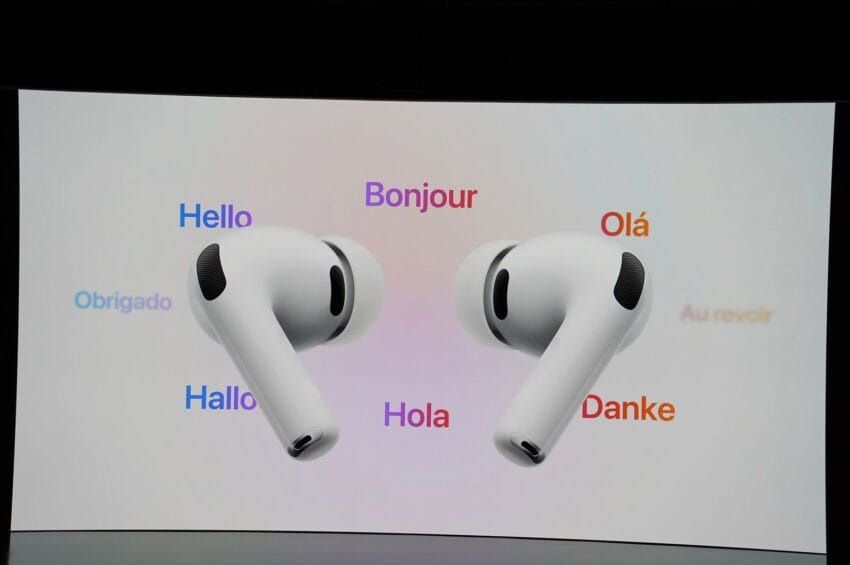
apple isn t packing a charging cable Apple’s decision to exclude a charging cable from the AirPods Pro 3 package marks a significant shift in its accessory strategy, raising questions about consumer convenience and environmental impact.
apple isn t packing a charging cable
Overview of AirPods Pro 3
The AirPods Pro 3 have been anticipated as a notable upgrade in Apple’s line of wireless earbuds. With enhancements in sound quality, battery life, and noise cancellation features, they promise to deliver an improved listening experience for users. However, the omission of a charging cable has sparked discussions among consumers and tech enthusiasts alike.
Technical Specifications
According to MacRumors, Apple has explicitly stated on the AirPods Pro 3 technical specifications page that the “USB‑C Charge Cable sold separately.” This means that users will need to either utilize an existing USB-C cable, purchase a new one, or rely on a wireless charging option to power the charging case. This change aligns with Apple’s broader strategy of reducing the number of accessories included in product packaging.
Consumer Reactions
The response from consumers has been mixed. For many, the absence of a charging cable may not pose a significant inconvenience. With the increasing prevalence of USB-C cables in households—thanks to various devices like laptops, smartphones, and tablets—some users may find they already have the necessary accessories on hand. However, others express frustration, particularly those who prefer having a complete package upon purchase.
Environmental Considerations
One argument in favor of Apple’s decision is its potential environmental benefits. By not including additional cables, Apple may be reducing electronic waste, as many consumers often discard or misplace extra cables. This approach could lead to a more sustainable model, encouraging users to rely on existing accessories rather than contributing to the growing problem of e-waste.
Apple has made strides in promoting its environmental initiatives, including its commitment to carbon neutrality across its supply chain and products by 2030. The decision to exclude a charging cable could be seen as a continuation of this effort, aiming to minimize the environmental footprint of its products.
Historical Context
Apple’s approach to packaging has evolved significantly over the years. In recent product launches, the company has already eliminated several accessories that were once standard. For instance, the removal of wall plugs and wired headphones from iPhone boxes has set a precedent for the AirPods Pro 3. This trend raises questions about whether Apple will continue to pare down included accessories in future products.
Implications for Future Products
As Apple continues to refine its product offerings, the decision to exclude charging cables may signal a larger trend in the tech industry. If consumers adapt to this model, it could pave the way for other manufacturers to follow suit. This shift may lead to a new standard where consumers are expected to provide their own charging accessories, potentially altering purchasing habits.
Moreover, the lack of a charging cable could influence consumer perceptions of value. Some users may feel that they are not receiving a complete product, which could impact their willingness to pay premium prices for Apple devices. As competition in the tech market intensifies, companies may need to balance sustainability with consumer expectations for comprehensive product packages.
Market Competition
The decision to exclude accessories comes at a time when competition in the wireless earbud market is fierce. Companies like Samsung, Sony, and Google are all vying for consumer attention with their own high-quality audio products. Many of these competitors still include charging cables and other accessories in their packaging, which could serve as a selling point for potential buyers.
Apple’s Brand Loyalty
Despite the potential drawbacks of not including a charging cable, Apple enjoys a strong brand loyalty among its user base. Many consumers are willing to overlook certain inconveniences due to the perceived quality and ecosystem integration of Apple products. However, this loyalty may be tested if customers feel that they are consistently receiving less value with each new product release.
Consumer Preparedness
For those who may find themselves unprepared for the absence of a charging cable, there are several options available. Users can purchase a USB-C charging cable from Apple or third-party retailers, often at varying price points. Additionally, many consumers may opt for wireless charging solutions, which can provide a convenient alternative for keeping their AirPods Pro 3 charged.
Third-Party Accessories
The market for third-party accessories is robust, with numerous manufacturers offering compatible charging cables and wireless charging pads. This ecosystem allows consumers flexibility in choosing products that best meet their needs. However, it also raises questions about compatibility and reliability, as not all third-party products may meet Apple’s quality standards.
Conclusion
The decision to exclude a charging cable from the AirPods Pro 3 package is emblematic of Apple’s ongoing evolution in product packaging and accessory inclusion. While the move may resonate with environmentally conscious consumers, it also raises concerns about convenience and perceived value. As the tech landscape continues to shift, it remains to be seen how this decision will impact consumer behavior and the competitive dynamics of the market.
As Apple navigates these changes, it will be crucial for the company to balance its sustainability goals with consumer expectations. The AirPods Pro 3 may be a solid upgrade in terms of technology, but the absence of a charging cable could serve as a litmus test for how far consumers are willing to adapt to a new norm in tech packaging.
Source: Original report
Was this helpful?
Last Modified: September 10, 2025 at 11:39 pm
2 views















